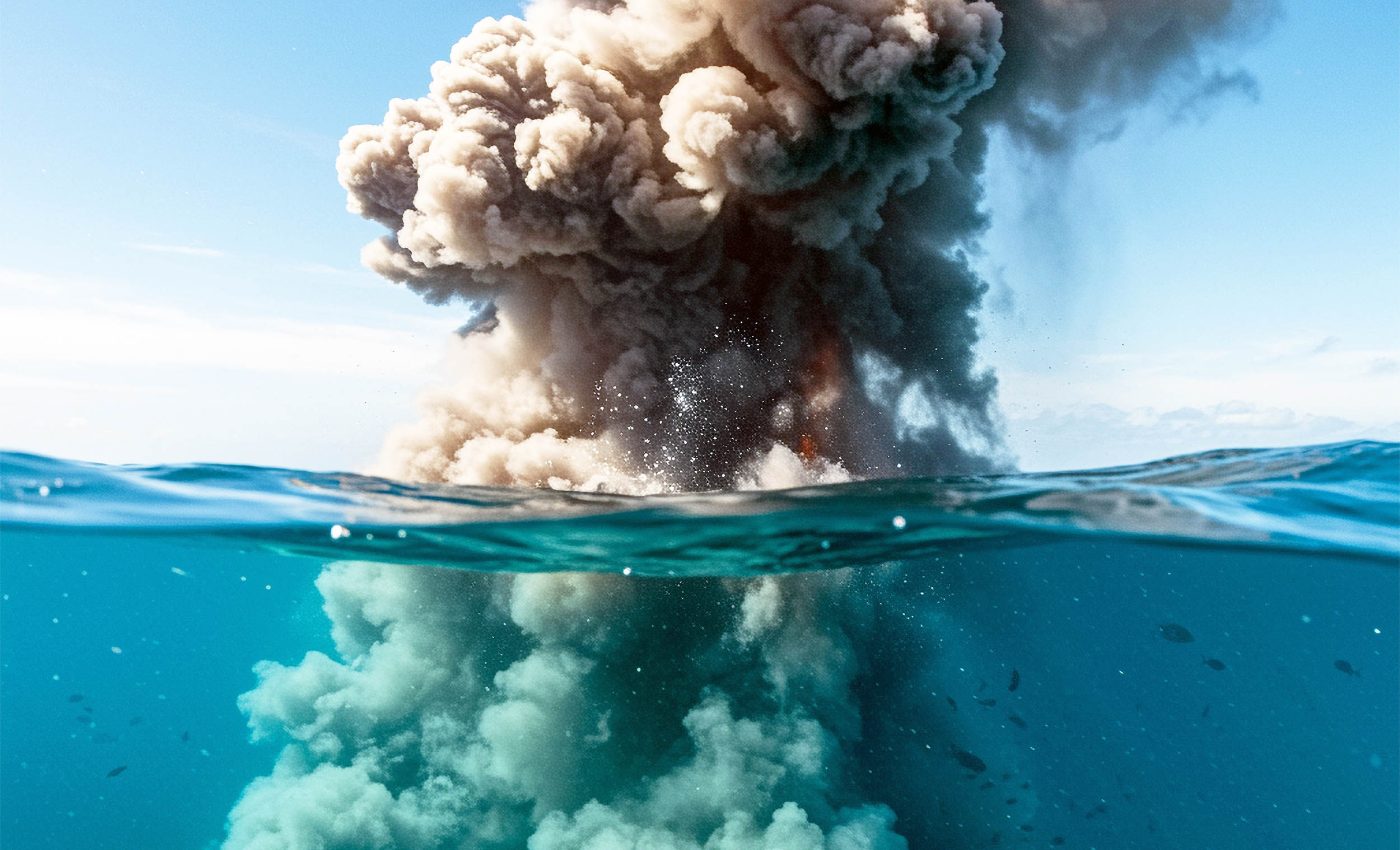
What happened in the ocean millions of years ago could happen again today
Underwater volcanoes, in the area that is now South Africa, vented roughly 20,500 gigatons of carbon dioxide into the ocean-atmosphere system roughly 183 million years ago, crippling the oxygen cycle.
Human activity between 1850 and 2019 has already pumped out about 2,390 gigatons of the gas. That’s 12 percent of the Jurassic total in less than two centuries.
Professor François Tissot of the California Institute of Technology studies what came next for the Jurassic seas and what it might tell us about the fate of today’s oceans.
Sudden loss of ocean oxygen
Bands of limestone from southern Italy record the Toarcian Oceanic Anoxic Event (T-OAE), a span when oxygen vanished from vast tracts of seawater and many marine species disappeared.
During the event, only 6 to 8 percent of the seafloor lay under dead, oxygen-starved water. Yet that area was 28 to 38 times larger than today’s anoxic patches.
“You can see lots of fossils within ocean sediments before the T‑OAE, and then suddenly they disappear,” said Tissot.
The Karoo‑Ferrar large igneous province triggered the event by pouring out vast amounts of carbon. It heated the planet, slowed ocean mixing, and altered chemistry enough to pull oxygen from the water.
The anoxic spell lasted roughly 300,000 to 500,000 years, eventually easing as volcanic pulses waned and natural feedbacks rebalanced carbon and oxygen cycles.
Carbon disrupted ocean life
Surging greenhouse gases warmed surface waters, strengthened stratification, and blocked the downward draw of fresh oxygen.
Warmer water also holds less dissolved gas, so every degree of heating squeezed oxygen concentrations further.
Nutrient runoff from newly exposed volcanic ash likely spurred algal blooms. When that organic matter sank and decayed, it consumed even more oxygen in deeper layers.

The result was anoxia, a chemically reduced state that favors the precipitation of once‑soluble uranium isotopes into sediments, leaving a measurable fingerprint for modern geochemists.
Scientists use those isotopes, preserved in carbonate grains, to reconstruct ocean redox conditions long after the water is gone.
Tracing ancient ocean oxygen change
Tissot’s team combined 30 limestone samples with a Bayesian model built by George Mason University researcher Michael Kipp to convert uranium data into the size of past anoxic zones.
The model showed oxygen loss peaking just after the first volcanic pulse, then gradually recovering as emissions slowed.
Because uranium mixes uniformly in seawater, its isotopic shift offers a global view rather than a local snapshot, sidestepping problems that plague black shale studies in restricted basins.
Independent work on molybdenum and thallium isotopes points to the same magnitude of Jurassic deoxygenation, reinforcing confidence in the carbonate method. Multiple tracers show how fast oceans can suffocate when carbon overwhelms natural buffers.
Rock preserved ocean memory
The limestones sampled from Mercato San Severino in Italy belong to a 5,000-foot-thick sequence of shallow-water carbonates. These were laid down on the southern edge of the ancient Tethys Ocean.
These deposits are ideal for capturing uranium isotope signals because they formed under well-oxygenated conditions and remained chemically stable over time.

Geochemical screening confirmed the rocks remained largely unaltered after burial. Isotope ratios, trace elements, and sediment structure all supported the conclusion that these limestones faithfully recorded seawater chemistry from the time of deposition.
Today’s waters mirror the past
Modern measurements show that only about 0.2 percent of the seafloor is overlain by permanently anoxic water, mostly in marginal seas like the Black Sea.
Yet the global inventory of dissolved oxygen has already fallen by roughly 2 percent since 1960. “Oxygen concentrations in both the open ocean and coastal waters have been declining since at least the middle of the 20th century,” said marine ecologist Denise Breitburg.
A 2024 study warned that deoxygenation will accelerate this century as warming and stratification intensify. If emissions rise, mid-depth zones could lose 20 percent of oxygen by 2100, exceeding many species’ physiological limits.
Dead zones already plague more than 400 estuaries worldwide, harming fisheries and coastal economies and hinting at larger changes offshore.
Action needed before oceans suffocate
Past events show that once widespread anoxia takes hold, recovery can take tens of thousands of years even after carbon input stops.
Unlike volcanic outbursts, human emissions are continuous and tightly linked to energy and food systems, making a quick cutoff challenging.
Cutting fossil fuel use, protecting carbon‑storing ecosystems, and curbing nutrient runoff can slow oxygen loss before feedback amplifies the trend.
Satellites, autonomous floats, and seafloor sensors now track oxygen in near real time. This gives policymakers a chance to act before thresholds comparable to the Jurassic pulse are crossed.
Tissot’s limestone cores remind us that the ocean’s memory is long and its tolerance finite.
The study is published in Proceedings of the National Academy of Sciences.
—–
Like what you read? Subscribe to our newsletter for engaging articles, exclusive content, and the latest updates.
Check us out on EarthSnap, a free app brought to you by Eric Ralls and Earth.com.
—–













